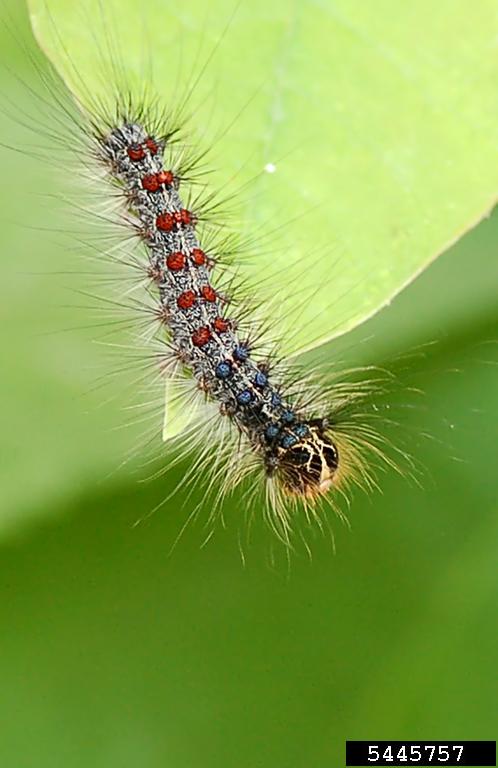
Spongy moth caterpillar. Photo credit: Jon Yuschock, Bugwood.org
March 2, 2023, marks one year since a new common name for Lymantria dispar, spongy moth, replaced the prior name of this insect, “gypsy moth.” This change was necessary because the word “gypsy” is an ethnic slur for the Romani people and the former common name equated people with insects. This is the first name change undertaken by ESA (Entomological Society of America)’s Better Common Names Project.
The current name—derived from the common name used in France and French-speaking Canada, “spongieuse“—refers to the moth’s sponge-like egg masses. Lymantria dispar is a damaging pest. This current name is a critical move in public awareness that focuses on an important feature of the moth’s biology while moving away from an outdated term. We encourage you to review any materials you may have on your website, ordinances and other material related to forest pests to ensure they are in accordance with this name change.
Spongy moth populations may have a temporary, large increase (an “outbreak”) in an area about every 10 years. Defoliation of susceptible tree and shrub species may be widespread during outbreaks, although healthy trees and shrubs are likely to survive if they are defoliated. High caterpillar numbers can be a tremendous nuisance. In addition, the caterpillar hairs cause skin rashes and other reactions in some people. Management options for reducing high populations include: egg mass oils, barrier and collection bands, physically destroying life stages, drowning egg masses and caterpillars in a can of soapy water, insecticidal soaps, and insecticide application to high-value trees or forest stands.
The effort to slow the establishment of spongy moth continues in unquarantined counties of western Wisconsin. In these counties, the Wisconsin Department of Agriculture, Trade and Consumer Protection (DATCP) monitors for the pest using traps and conducts aerial spray treatments on any isolated populations it finds. Find more information on DATCP’s spongy moth aerial spray program page.
People living in non-quarantined counties may come across spongy moth. If you do, call 1-800-642-MOTH (6684) or email spongymoth@wisconsin.gov to report it and please take these reasonable precautions to reduce the spread of spongy moth.
More information is available on the Wisconsin spongy moth portal and on the Entomological Society of America’s website.
